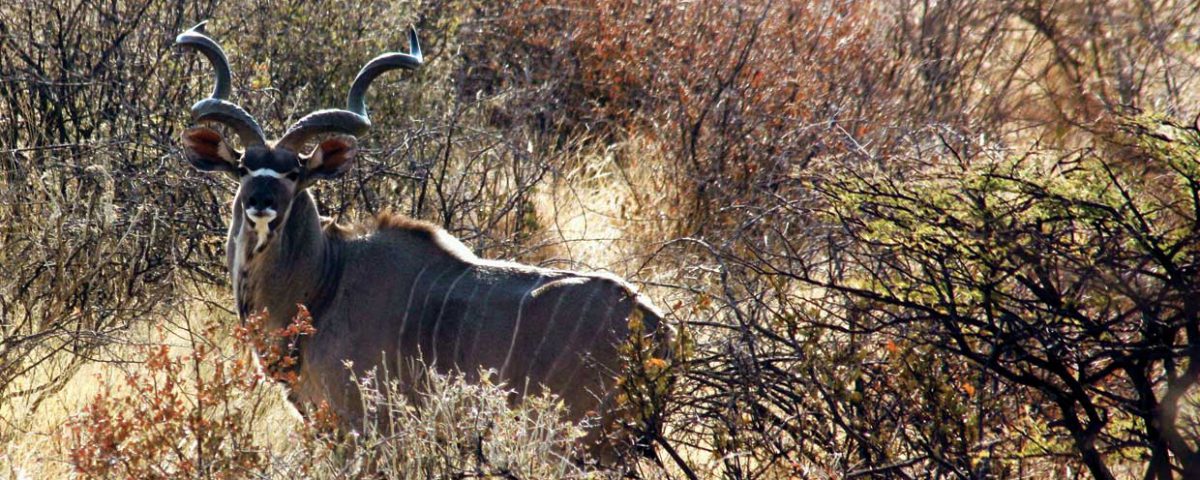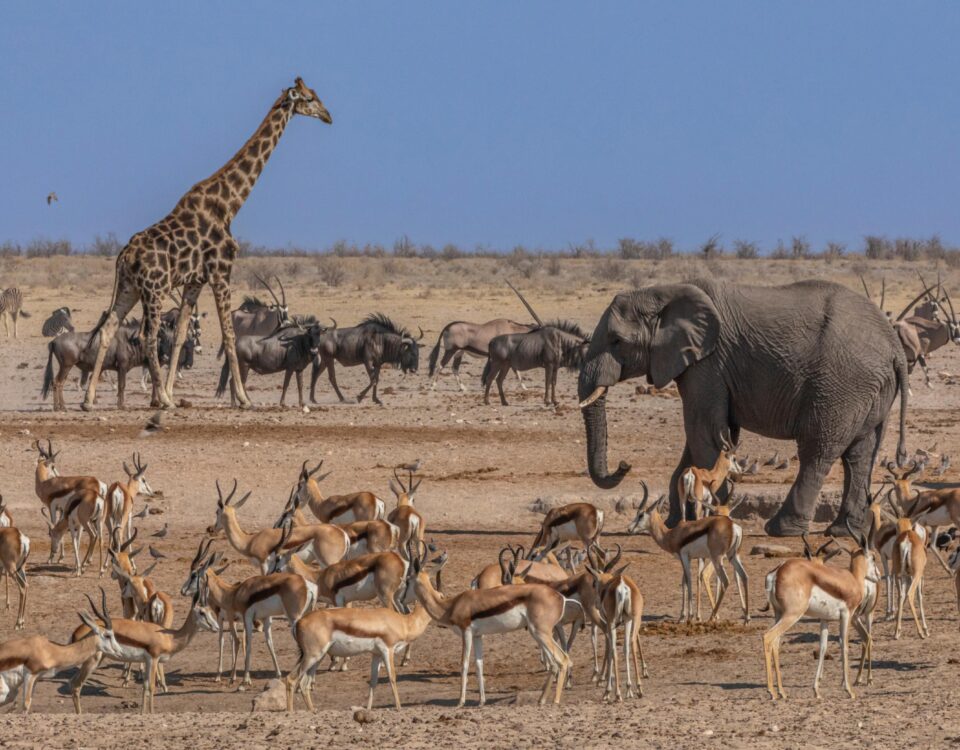| Main photo ©Dirk de Bod

My favourite quarry
June 9, 2016
Nature’s ultimate hunter
June 9, 2016T he popular perception at the time was that this disease, which became known as kudu rabies, was a natural occurrence following the overpopulation of a species, because the outbreak did coincided with a population explosion. The absence of mortality factors such as the kudu’s natural predator, lion and wild dogs, could have resulted in the increase of the population. Artificial water points and dams on farms lessened the effect of drought on the kudu population.
The epidemic did not die down completely after the peak in the eighties and now, 30 years later, kudu rabies occurs everywhere in Namibia south of the Veterinary Cordon Fence, where there are high population densities.
“We now know that the virus that originally caused the disease has mutated”, says Dr Rainer Hassel, the man who has been involved as a State veterinarian when the disease first broke out. “We still don’t know why the kudu is specifically susceptible to the disease. Based on genetic research, we do know however, that although the jackal is the traditional carrier, the genetic sequencing of the virus in the kudu has changed.”
The most recent study found that “rabies is being maintained independently in the Namibian kudu population, a unique phenomenon with ecological and economical impacts.”
At this point scientists, farmers, Government Ministries, NGOs, private business and universities collaborate to fund and carry out a research project to control the disease, while conducting a Population Dynamic Study simultaneously. According to Dr Hassel the aim of the project it to develop an effective method of vaccinating free-ranging kudu, if it can be established how the non-bite transmission of the virus takes place.
“If the project is successful, a user-friendly, cost-effective control measure would become available to control the disease – a first in the world.”
Waterberg to be the laboratory
A few years ago the Namibian Government donated several species of wildlife to Cuba, for their national parks. Because Cuba is an island and doesn’t have diseases which are widespread on many continents, they demanded serological tests for infectious diseases before the animals left Namibian soil. State of the art quarantine facilities were built at Waterberg Plateau and Etosha National Park to test every animal.
Apart from the fact that the facilities are perfect for this study, the spin-off of the Cuba testing provided serological and scientific data on specifically the kudu.
It showed that of all species, one animal in 12 tested positive for some or other disease. This did not mean that the animal was necessarily infected, only that it had anti-bodies, which meant it had been exposed to a disease previously. Of the 12 kudus tested however, five or six tested positive, which already indicated that there was something peculiar to the species, according to Dr Hassel.
How the vaccine will work
At the quarantine facility free ranging kudu will be exposed to a weakened disease causing organism, which will stimulate the animal’s immune system to develop antibodies. When an animal does develop antibodies, it means that the immune system has reacted.
Whether the animal has developed enough antibodies will only be established once it is being exposed to the real virus. If it survives, it means there are enough antibodies in its system. The entire process will take place in the controlled environment of the facility.
“Should the oral vaccine prove to be successful, a second phase will need to be implemented to develop a suitable vaccine containing bait, that can then be used to vaccinate free ranging kudu. This vaccine will be made available to farmers as part of a structured programme to control the disease” says Dr Hassel.
HOW CAN WE HELP?
_____________________________________
By donating time and money to the LPO Kudu Rabies Project to help control the diesease and at the same time, support a study that would determine the dynamics of kudu population.

This article was first published in the HUNTiNAMIBIA 2015 issue.


